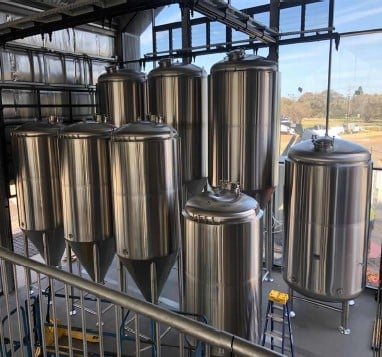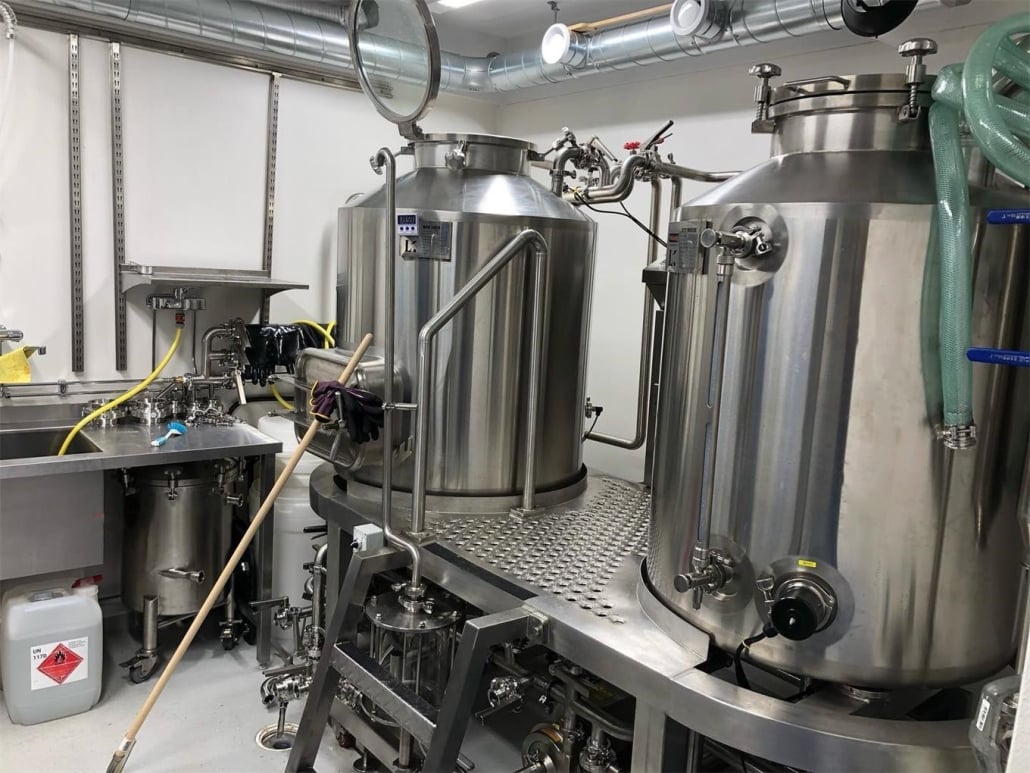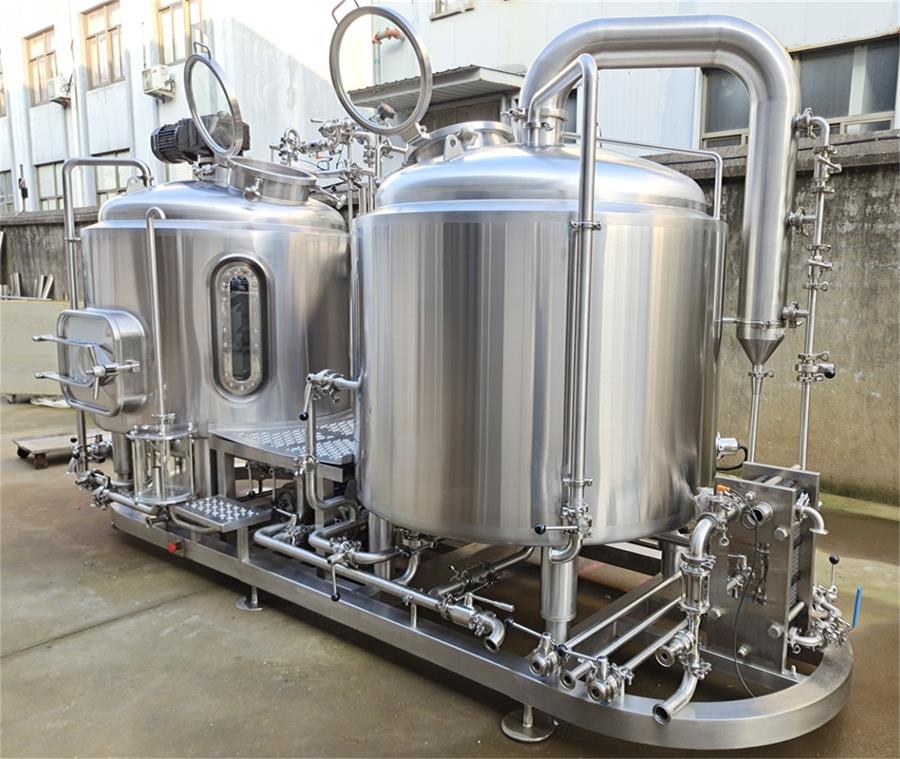Brewery Lab Equipment
Overview of Brewery Lab Equipment
Brewing beer is an intricate art, blending science, precision, and creativity. To produce top-quality beer, a brewery needs more than just a great recipe and skilled brewers; it requires a well-equipped laboratory. The brewery lab plays a crucial role in ensuring consistency, quality control, and product innovation. Whether you’re a small craft brewer or a large-scale brewery, having the right lab equipment is essential.
This guide will delve into everything you need to know about brewery lab equipment. We’ll cover the types of equipment you’ll need, the brewing process itself, how to choose the right suppliers, and everything in between. This article is not just a simple checklist; it is designed to be a detailed, SEO-optimized resource that will help you make informed decisions about your brewery’s lab setup.

Detailed Guide to Brewery Lab Equipment
The success of your brewing operations hinges on the precision and reliability of your lab equipment. Here, we’ll discuss the critical tools and machinery needed in a brewery lab.
Essential Brewery Lab Equipment
- Microscope: Used for yeast cell counting and assessing yeast health, which is critical for fermentation.
- pH Meter: Measures the acidity of the wort and beer, an essential factor in brewing consistency and flavor.
- Spectrophotometer: Analyzes beer color and bitterness, ensuring your product meets quality standards.
- Autoclave: Sterilizes equipment, ensuring no contamination affects the brewing process.
- Refractometer: Measures sugar concentration in the wort, which is crucial for determining potential alcohol content.
- Incubator: Maintains a controlled environment for yeast culturing, essential for yeast propagation and purity.
Types of Brewery Lab Equipment
To make it easier to understand and choose the right equipment, we’ve organized the different types of brewery lab equipment in the table below:
| Equipment Type | Purpose | Key Features |
|---|---|---|
| Microscope | Yeast cell counting and health assessment | High magnification, adjustable light, digital output |
| pH Meter | Measuring acidity in wort and beer | High precision, easy calibration, robust design |
| Spectrophotometer | Analyzing beer color and bitterness | UV/VIS range, quick readings, user-friendly |
| Autoclave | Sterilizing lab equipment | High pressure, temperature control, safety features |
| Refractometer | Measuring sugar concentration | Portable, digital readout, easy calibration |
| Incubator | Culturing yeast and bacteria | Temperature control, humidity control, large capacity |
Understanding the Brewing Process
Brewing is a multi-stage process, each requiring specific equipment and precise control to ensure the final product meets desired quality standards. Let’s break down the process into its main stages, and highlight how lab equipment fits into each.
1. Malting
- Process: Malting is the process where barley grains are soaked, germinated, and dried. This converts the starches in the grains into fermentable sugars.
- Lab Equipment Role: During malting, moisture content and temperature are critical. Instruments like moisture analyzers and temperature probes ensure the malt is prepared perfectly.
2. Mashing
- Process: Mashing involves mixing the malt with water and heating it to convert starches into sugars, producing wort.
- Lab Equipment Role: pH meters and thermometers are crucial at this stage to ensure the optimal conversion of starches into sugars. Refractometers are used to measure the sugar concentration in the wort.
3. Boiling
- Process: The wort is boiled, and hops are added for bitterness, flavor, and aroma. This step also sterilizes the wort.
- Lab Equipment Role: A spectrophotometer can be used to measure the bitterness (IBU) and color of the wort, ensuring it meets the recipe’s specifications.
4. Fermentation
- Process: The wort is cooled and yeast is added to ferment the sugars into alcohol and CO2.
- Lab Equipment Role: Yeast management is crucial. A microscope is used to check yeast viability, while an incubator may be used for yeast propagation. A pH meter also monitors the fermentation process.
5. Conditioning and Packaging
- Process: After fermentation, the beer is conditioned to mature the flavors before it is packaged.
- Lab Equipment Role: Quality control tools like spectrophotometers and pH meters ensure the final product meets quality standards. Autoclaves are used to sterilize packaging equipment to prevent contamination.
Capacity, Space, Design, Layout, and Customization in Brewery Labs
When setting up your brewery lab, there are several factors to consider, including the lab’s capacity, the available space, design, layout, and potential for customization. Below, we’ve summarized these factors in a comprehensive table to guide your decisions.
| Factor | Considerations | Details |
|---|---|---|
| Capacity | Equipment should match the brewery’s production scale. | Small-scale setups need compact, multifunctional equipment; large-scale setups require robust systems. |
| Space | Efficient use of space is crucial for workflow and safety. | Prioritize vertical storage and modular equipment to optimize limited space. |
| Design | Equipment design should facilitate ease of use and maintenance. | Ergonomic designs, easy access for cleaning, and intuitive interfaces improve productivity. |
| Layout | The lab layout should support the brewing process flow. | Ensure the layout minimizes movement and maximizes efficiency. Consider linear or U-shaped designs. |
| Customization | Tailoring equipment to specific brewing needs can improve efficiency and outcomes. | Customized fermenters, unique measurement tools, or specialized sensors can be beneficial. |
Choosing Brewery Lab Equipment Suppliers and Price Ranges
Selecting the right supplier is just as important as choosing the right equipment. The supplier’s reputation, the range of products they offer, and their pricing can significantly impact your brewery’s operations.
| Supplier Criteria | Details | Price Range |
|---|---|---|
| Reputation | Choose suppliers with positive reviews and a history of reliability in the brewing industry. | Higher prices, but reliable equipment and support are often worth the cost. |
| Product Range | Suppliers should offer a wide range of lab equipment to meet various brewing needs. | Wide range pricing, from affordable starter kits to high-end specialized equipment. |
| Support and Warranty | Strong customer support and good warranty terms are crucial for long-term operations. | Suppliers with excellent support may charge more but offer peace of mind. |
Installation, Operation, and Maintenance of Brewery Lab Equipment
Installing, operating, and maintaining your lab equipment correctly is vital to ensure consistent and reliable brewing outcomes. The following table outlines the key considerations for each stage.
| Stage | Considerations | Details |
|---|---|---|
| Installation | Professional installation ensures proper setup and operation. | Hire experienced technicians to install sensitive equipment like autoclaves and spectrophotometers. |
| Operation | User-friendly equipment with clear instructions is ideal. | Choose equipment with digital displays, simple calibration, and intuitive controls. |
| Maintenance | Regular maintenance prevents breakdowns and extends equipment life. | Implement a routine maintenance schedule. Use proper cleaning and calibration techniques. |
How to Choose a Brewery Lab Equipment Supplier
Selecting the right supplier can be daunting, especially with the numerous options available. Here’s a table to guide you through the key factors to consider when choosing a supplier.
| Criteria | Why It Matters | How to Assess |
|---|---|---|
| Experience in Industry | Suppliers with industry-specific experience understand the unique needs of breweries. | Look for suppliers with a track record in brewing equipment. |
| Quality of Equipment | High-quality equipment ensures durability, accuracy, and reliability in your lab operations. | Check for certifications, customer reviews, and product testing data. |
| Customer Support | Reliable customer support helps address issues quickly, minimizing downtime in your operations. | Assess their support channels, response times, and customer testimonials. |
| Price vs. Value | The cheapest option is not always the best. Consider long-term value and total cost of ownership. | Compare prices, but also factor in warranty, support, and potential maintenance costs. |
Advantages and Limitations of Brewery Lab Equipment
While brewery lab equipment offers numerous benefits, there are also limitations to consider. Here’s a comparison of the pros and cons to help you weigh your options.
| Aspect | Advantages | Limitations |
|---|---|---|
| Precision and Accuracy | High-quality lab equipment offers precise measurements, crucial for consistent brewing outcomes. | Initial cost can be high, and some equipment may require specialized training to operate. |
| Quality Control | Advanced equipment helps maintain consistent product quality, meeting industry standards. | Regular maintenance is needed to ensure accuracy, which adds to the operational costs. |
| Product Innovation | With the right equipment, you can experiment with new recipes and processes, leading to unique beer offerings. | Equipment may become obsolete quickly with technological advancements, requiring frequent updates or replacements. |
| Operational Efficiency | Automated and digital tools save time and reduce human error in the brewing process. | Complex equipment can be difficult to troubleshoot without professional help, leading to potential downtime. |

FAQs
Q1: What is the most critical piece of equipment in a brewery lab?
A1: The most critical piece of equipment can vary depending on your brewing process, but generally, a pH meter and a microscope are essential. The pH meter ensures your wort and beer maintain the correct acidity levels, which is crucial for taste and consistency. The microscope is indispensable for monitoring yeast health, which directly impacts fermentation quality.
Q2: How much does setting up a brewery lab cost?
A2: The cost of setting up a brewery lab can vary widely based on the size of the brewery and the sophistication of the equipment. Small breweries might spend anywhere from $10,000 to $50,000, while larger operations can easily exceed $100,000. It’s essential to balance initial costs with the long-term value provided by high-quality equipment.
Q3: Can I customize my brewery lab equipment?
A3: Yes, many suppliers offer customization options to fit your specific brewing needs. Customizations might include specialized fermenters, unique measurement tools, or tailored software solutions. While custom equipment can be more expensive, it often leads to greater efficiency and better brewing outcomes.
Q4: How often should brewery lab equipment be calibrated?
A4: Calibration frequency depends on the type of equipment and its usage. For example, pH meters should be calibrated daily or before each use, while spectrophotometers might only need calibration once a week. Regular calibration is crucial to maintain the accuracy and reliability of your lab results.
Q5: What are the best practices for maintaining brewery lab equipment?
A5: Best practices for maintaining brewery lab equipment include regular cleaning, following manufacturer guidelines for maintenance, keeping a detailed log of maintenance activities, and ensuring that only trained personnel handle sensitive equipment. Regular maintenance not only prolongs the life of your equipment but also ensures that your brewing processes remain consistent and reliable.
Conclusion
Setting up a well-equipped brewery lab is essential for any brewery aiming to produce high-quality, consistent beer. The right lab equipment ensures precise measurements, effective quality control, and the ability to innovate and improve your products. By carefully choosing the right equipment and suppliers, maintaining your tools properly, and understanding the role of each piece of equipment in the brewing process, you can set your brewery up for long-term success. Remember, investing in your lab is an investment in your beer’s quality and your brewery’s reputation.
Additional FAQs About Brewery Lab Equipment
1) What’s the minimum viable Brewery Lab Equipment setup for a 5–10 BBL brewery?
- Start with: pH meter (±0.01), hydrometer/refractometer, microscope with hemocytometer and methylene blue, DO meter access (own or service), incubator, ATP swabs, and calibrated thermometers. Add spectrophotometer and CO2 meter as volume grows.
2) How often should I verify and calibrate critical lab instruments?
- pH meter: daily or per shift; spectrophotometer: weekly checks with standards; thermometers and hydrometers: quarterly; DO meters: per-use zero/span; balances: monthly. Keep a calibration log aligned to ISO/GLP best practices.
3) Do I need a dissolved oxygen (DO) meter if I don’t package cans?
- Yes, DO at knockout and post-transfer affects flavor stability even for draft. If purchase is delayed, use periodic lab services or shared guild equipment, and enforce closed transfers and CO2 purges to mitigate O2 pickup.
4) What microbiology tests matter most for small breweries?
- Routine aerobic plate counts, Lactobacillus/Pediococcus (selective media), wild yeast screening, and wort/beer ATP surface hygiene checks. Sample at FV racking arm, brite outlet, and filler bowl.
5) How should I plan lab space and utilities?
- Provide a sink with DI/RO water access, 120/240V outlets on GFCI, chemical-resistant benching, segregated “clean” and “dirty” zones, vented storage for solvents/caustics, eye-wash/shower, and lockable chemical cabinets. Ensure ergonomic microscope positioning and splash protection near acids/caustics.
2025 Industry Trends: Brewery Lab Equipment Adoption and Costs
- QA normalization: Even nano/micro sites standardize on pH + cell counts + DO checks; spectrophotometers for color/IBU moving into sub-$2k tiers.
- Rapid micro testing: LAMP/qPCR kits accelerate bacteria/yeast detection to same-day decisions for small breweries.
- Data logging: Cloud LIMS-lite and Bluetooth meters reduce transcription errors and support audits.
- Sustainability and safety: Increased use of non-hazardous cleaners for labware and improved ventilation standards.
2025 Benchmark Pricing and Adoption (North America/EU)
| Equipment/Metric | 2023 Avg | 2024 Avg | 2025 YTD | Notes/Sources |
|---|---|---|---|---|
| Benchtop pH meter (brew-grade) | $250–$600 | $240–$580 | $230–$560 | BA supplier quotes |
| DO meter (portable, optical) | $2,800–$4,200 | $2,600–$4,000 | $2,400–$3,800 | OEM pricing trends |
| Spectrophotometer (beer color/IBU) | $1,800–$3,200 | $1,700–$3,000 | $1,600–$2,800 | Wider low-cost options |
| Basic microbiology starter kit | $600–$1,200 | $550–$1,100 | $500–$1,000 | Media + incubator |
| LIMS-lite/subscription QA apps | $20–$80/mo | $20–$70/mo | $15–$65/mo | Cloud/mobile adoption |
| Breweries with formal QA plan | 48% | 55% | 62% | BA benchmarking |
Authoritative resources:
- Brewers Association QA, Safety, Benchmarking: https://www.brewersassociation.org/
- Master Brewers Association Technical Quarterly (QA/micro): https://www.mbaa.com/publications/tq/Pages/default.aspx
- Institute of Brewing & Distilling (training modules): https://www.ibd.org.uk/
- US FDA Food Code/OSHA lab safety references: https://www.osha.gov/
Latest Research Cases
Case Study 1: Rapid DO Control via SOP and Instrument Upgrade (2025)
Background: A 3,000 bbl/year microbrewery reported early staling in draft accounts.
Solution: Implemented closed transfers, CO2-verified brite purges (<0.5% O2), installed an optical DO meter, and added post-CIP rinse verification.
Results: Brite DO reduced from 120–180 ppb to consistently <40 ppb; complaint rate dropped 70%; sensory shelf stability improved at 12 weeks. Sources: BA Quality resources; MBAA TQ case notes on O2 management.
Case Study 2: LAMP-Based Micro Testing to Shorten Hold Times (2024)
Background: Startup brewery experienced packaging delays due to external micro lab turnaround.
Solution: Adopted LAMP rapid detection for Lactobacillus/Pediococcus and weekly wild yeast screens; trained staff on aseptic sampling and media controls.
Results: Hold time before release reduced from 72–96 hours to <24 hours; spoilage incidents fell to zero over 6 months; cost parity achieved vs external testing by month 9. References: MBAA TQ methods; supplier white papers on rapid micro assays.
Expert Opinions
- Dr. Tom Shellhammer, Professor of Fermentation Science, Oregon State University
Viewpoint: “Routine measurement of pH, DO, and bitterness with fit-for-purpose Brewery Lab Equipment has an outsized impact on flavor stability and brand consistency.”
Source: Conference presentations and peer-reviewed work - Mary Pellettieri, Quality Consultant and Author
Viewpoint: “Documented SOPs plus simple logs turn instruments into a quality system. Calibration discipline is non-negotiable for small breweries.”
Source: Brewers Association Quality resources and workshops - Brent Jordan, Microbiologist, MBAA presenter
Viewpoint: “Rapid micro tools (LAMP/qPCR) let small labs act fast. The key is sampling rigor and controls—technology won’t fix poor technique.”
Source: MBAA Technical Quarterly and seminars
Practical Tools and Resources
- Brewers Association Quality: Templates for sensory, micro plans, and DO management — https://www.brewersassociation.org/
- MBAA TQ: Methods for IBU/color by spectrophotometry, micro protocols — https://www.mbaa.com/publications/tq/Pages/default.aspx
- IBD Training: Lab fundamentals for brewers (pH/DO/micro) — https://www.ibd.org.uk/
- AOAC/ASTM references for analytical methods — https://www.aoac.org/ and https://www.astm.org/
- Safety: OSHA laboratory safety guidelines — https://www.osha.gov/
- LIMS-lite apps for small breweries (examples): Beer20/80, Google Workspace + standardized QA sheets
- Instrument vendors: Anton Paar (DMA/CO2/DO), Hach (spectros/DO), Omega (temp/pressure sensors) — https://www.anton-paar.com/ | https://www.hach.com/ | https://www.omega.com/
Last updated: 2025-09-28
Changelog: Added 5 targeted FAQs; 2025 benchmark table with pricing/adoption; two recent QA-focused case studies; expert viewpoints; curated tools/resources with authoritative links for Brewery Lab Equipment
Next review date & triggers: 2026-03-31 or earlier if instrument pricing shifts >10%, rapid micro test methods gain new approvals, or BA QA benchmarking updates materially change small-brewery recommendations
Share this entry
Interested in learning more about Brewing Systems including additional details and pricing information? Please use the form below to contact us!
YOLONG BREWERY EQUIPMENT FAQS
- Commercial Brewery / Craft Brewery / Microbrewery / Nanobrewery
- What is The Difference Between Craft Beer and Industrial Beer?
- The Bespoke Differences In Custom Brewing Systems
- Everything You Need to Know About Kettle Souring
- How to Choose Brewing Equipment for Your business?
- How To Choose The-Best Partner To Build Your Commercial Microbrewing System?
- Two Detection Sensors That You Need To Use In Your Brewhouse System
- Remote Control Applications in Brewing Equipment/How does it work?
- How To Clean Your Brand New Brewery Tanks?

